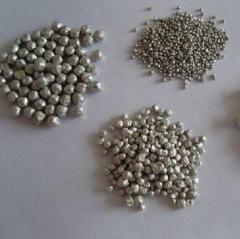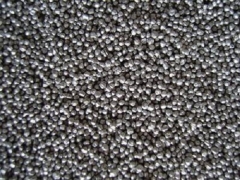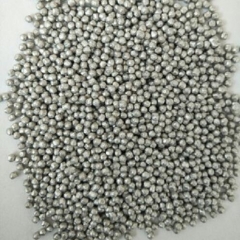About Magnesium Granules Mg Granules:
A magnesium particle is a pure magnesium metal particle whose size is usually between microns and millimeters. By the size and shape of the particles, they can be divided into different types, such as spherical, cubic, polygon, etc. The chemical composition of magnesium particles is usually pure magnesium or magnesium alloys containing a small amount of alloying elements, such as Mg-Al, Mg-Zn, etc.
Magnesium particles have many excellent physical and chemical properties. First, magnesium particles have a lower density, so they have a good weight-reduction effect and can be used to make lightweight materials. Secondly, magnesium particles have good processing properties and can be processed in plastic processing, casting, extrusion, and other processes. In addition, magnesium particles also have good electrical and thermal conductivity, making them widely used in the field of electronics and heat exchange.
Magnesium particles have high reactivity and ion valence states in terms of chemical properties, which makes it show good catalytic performance in some specific reactions. In addition, magnesium particles also have good corrosion resistance and high-temperature stability, so it has good adaptability in harsh environments.
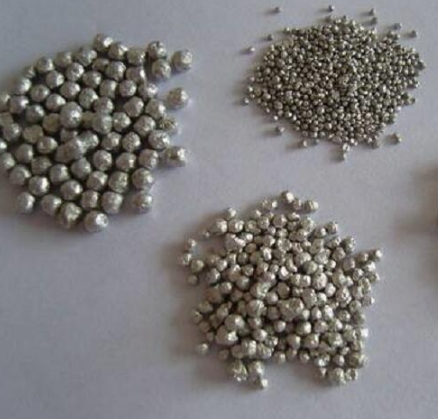 Technical Parameter of Magnesium Granules Mg Granules:
Technical Parameter of Magnesium Granules Mg Granules:
| Product Name |
MF |
Purity |
Particle Size |
Bulk Density |
Melting Point |
Color |
| Magnesium Granules |
Mg |
99.95% |
4 * 4mm |
1.74 g/cm3 |
648.8℃ |
Silver White
|
Applications of Magnesium Granules Mg Granules:
Magnesium particle is a metal material with excellent physical and chemical properties and has many applications in many fields. Here are some of the main application areas:
Automotive manufacturing: Magnesium particles are widely used in automotive manufacturing due to their lightweight and high-strength properties. Using magnesium particles can significantly reduce the vehicle's weight, improving fuel efficiency and reducing carbon emissions. In addition, magnesium particles also have excellent corrosion resistance, which can ensure the car's durability after long-term use.
Aerospace: In the aerospace sector, lightweight and high strength are key performance requirements. Magnesium particles are excellent at this, making it widely used in manufacturing products such as aircraft and rockets.
Electronic equipment: Magnesium particles make lightweight, durable electronic equipment. For example, magnesium particles provide good impact and corrosion resistance in laptops, tablets, and smartphones.
Construction: In the construction industry, magnesium particles make lightweight, high-strength building materials such as doors and Windows, curtain walls, and suspended ceilings. The characteristics of magnesium particles make these products have better insulation, sound insulation, and impact resistance.
Biomedical: Magnesium particles also have a wide range of applications in the biomedical field. For example, magnesium particles can act as drug carriers, delivering drugs accurately to the site of the lesion. In addition, magnesium particles can also be used to make biodegradable medical devices, such as surgical sutures.
New energy: In the new energy field, magnesium particles can manufacture efficient energy storage devices, such as magnesium and hydrogen-magnesium batteries. These batteries have advantages such as high energy density and long life and are expected to play an important role in the future energy mix.
Environmentally friendly: Magnesium particles can make environmentally friendly materials, such as biodegradable packaging and agricultural mulch. These materials can be degraded naturally after use, reducing environmental pollution.
Sports equipment: Magnesium particles can make lightweight, sturdy sports equipment such as bicycles, rowing boats, and snowboards. These products can provide better performance and comfort to meet the needs of athletes.
Food industry: In the food industry, magnesium particles can be used to make nutritional supplements and additives. For example, foods containing magnesium particles can provide the minerals the body needs to maintain good health.
Production Method of Magnesium Granules :
There are many methods for producing magnesium particles, among which the main methods include physical methods, chemical, and biological methods. These methods are described in detail below.
Physical method: The physical method uses physical means to crush magnesium raw materials into particles. The method mainly includes mechanical ball milling and gas atomization methods.
Mechanical ball milling method: The magnesium raw material is mixed with the grinding ball, and the raw material is crushed into particles by the impact and friction of the grinding ball through the high-speed rotating mill. The advantages of this method are simple to process, low cost, low production efficiency, and coarser product size.
Gas atomization method: The use of high-temperature gas to spray dry magnesium raw materials so that they form fine particles. The advantages of this method are fine particle size and high production efficiency, but the equipment investment is large, and the production cost is high.
Chemical method: The chemical method uses chemical reactions to convert magnesium raw materials into magnesium particles. The method includes the precipitation, electrolysis, and spray pyrolysis methods.
Precipitation method: the magnesium ion and the appropriate precipitant reaction, the formation of insoluble in water magnesium precipitate, and then through filtration, washing, drying, and other processes to obtain magnesium particles. The advantages of this method are simple process and low cost, but the purity of the product is low, and impurities may be introduced in the precipitation process.
Electrolysis: The solution containing magnesium ions is electrolyzed, and magnesium is precipitated on the electrode to form magnesium particles. The advantages of this method are high purity and uniform particle size. Still, the equipment investment is large, the production cost is high, and harmful gases such as chlorine gas may be produced in the electrolytic process.
Spray pyrolysis method: The solution containing magnesium ions is sprayed into the high-temperature furnace through the sprayer to instantly evaporate, and a thermal decomposition reaction occurs, forming magnesium particles. The advantages of this method are high purity and uniform particle size, but large equipment investment, and high production cost.
Biological method: The biological method uses biological enzymes or microorganisms to convert magnesium raw materials into magnesium particles. The method mainly includes enzyme catalysis and microbial synthesis.
Enzyme catalytic method: The use of specific enzymes to catalyze the reaction of magnesium raw materials to convert them into magnesium particles. The advantages of this method are high purity and mild reaction conditions, but the source of enzymes is limited, and the price is high.
Microbial synthesis method: Some microorganisms' growth and metabolism process converts magnesium raw materials into magnesium particles. The advantages of this method are mild production conditions and strong sustainability, but the production cycle is long, and the environmental requirements are high.
Storage of Magnesium Granules Mg Granules:
Magnesium granules Mg granules should be sealed in vacuum packing and stored in the cool and dry room, the niobium carbide can not be exposure to air.
Packing & Shipping of Magnesium Granules Mg Granules:
We have many different kinds of packing which depend on the magnesium granules Mg granules quantity.
Magnesium granules Mg granules packing: vacuum packing, 1kg/bag, 10kg/bag, or as your request.
Magnesium granules Mg granules shipping: could be shipped out by sea, by air, by express as soon as possible once payment receipt.
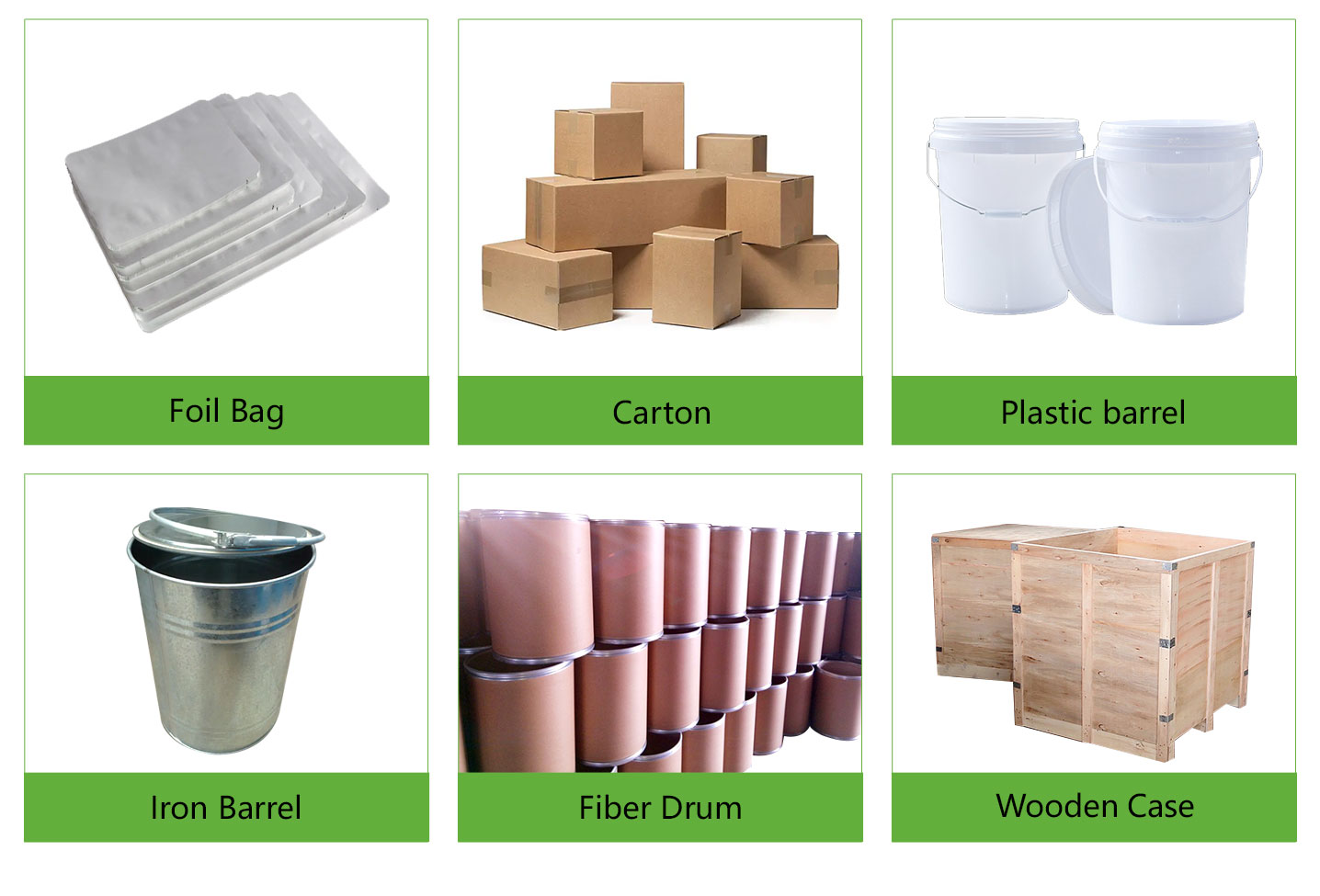
Luoyang Tongrun Nano Technology Co. Ltd. (TRUNNANO) is a trusted global chemical material supplier & manufacturer with over 12 years of experience in providing super high-quality chemicals and Nanomaterials, including boride powder, nitride powder, graphite powder, sulfide powder, 3D printing powder, etc.
If you are looking for high-quality Magnesium Granules powder, please feel free to contact us and send an inquiry. ([email protected])


